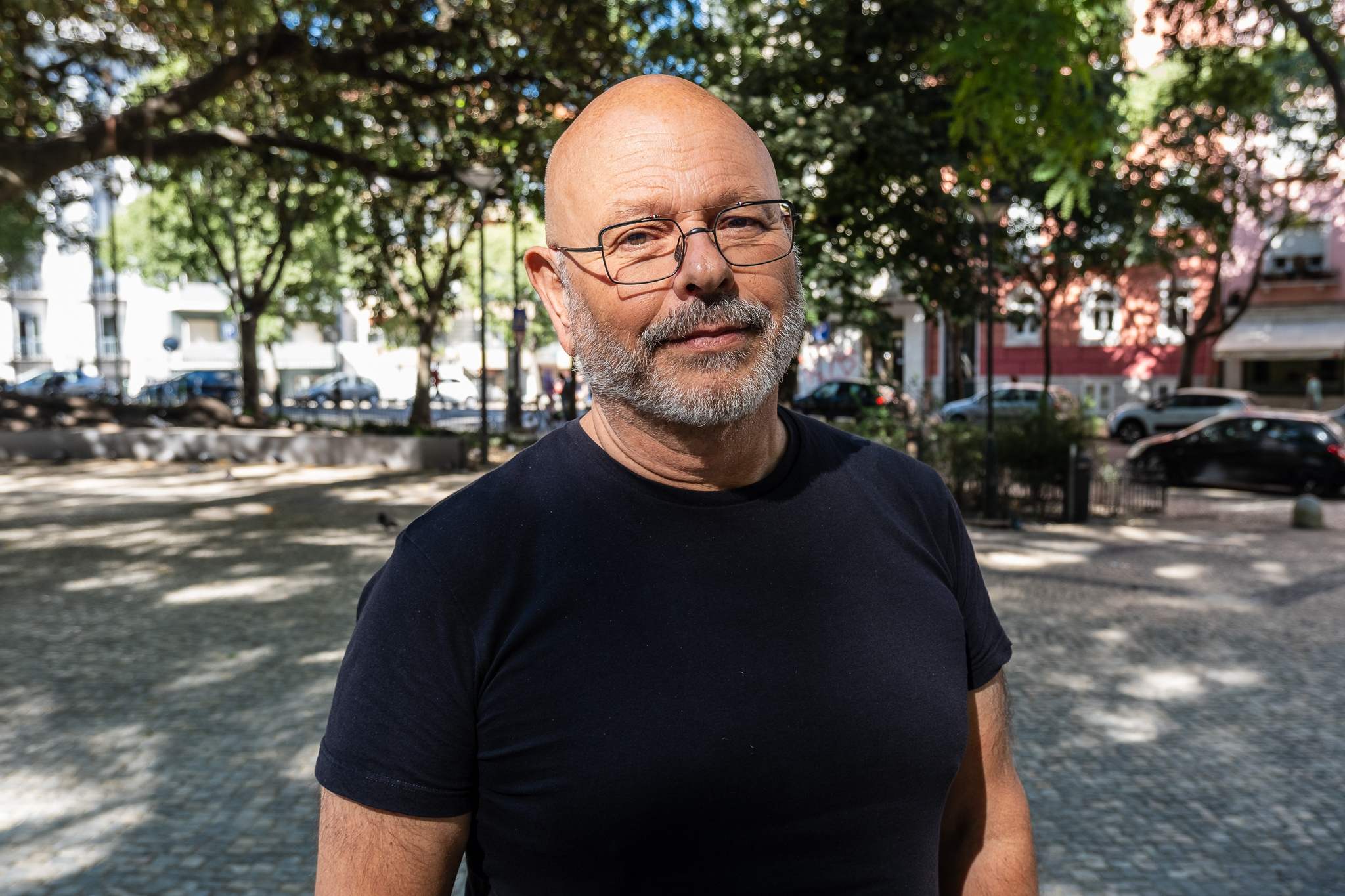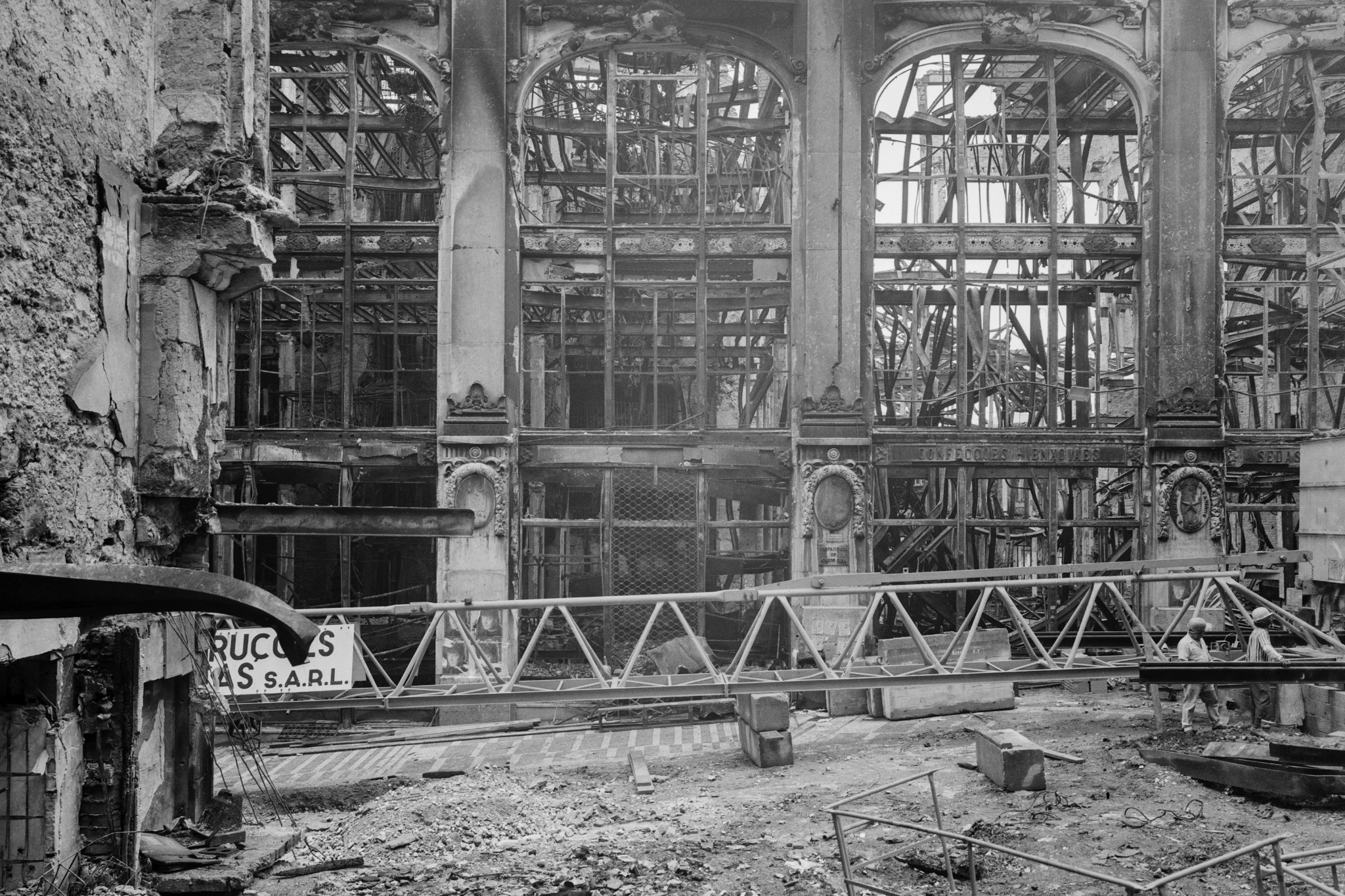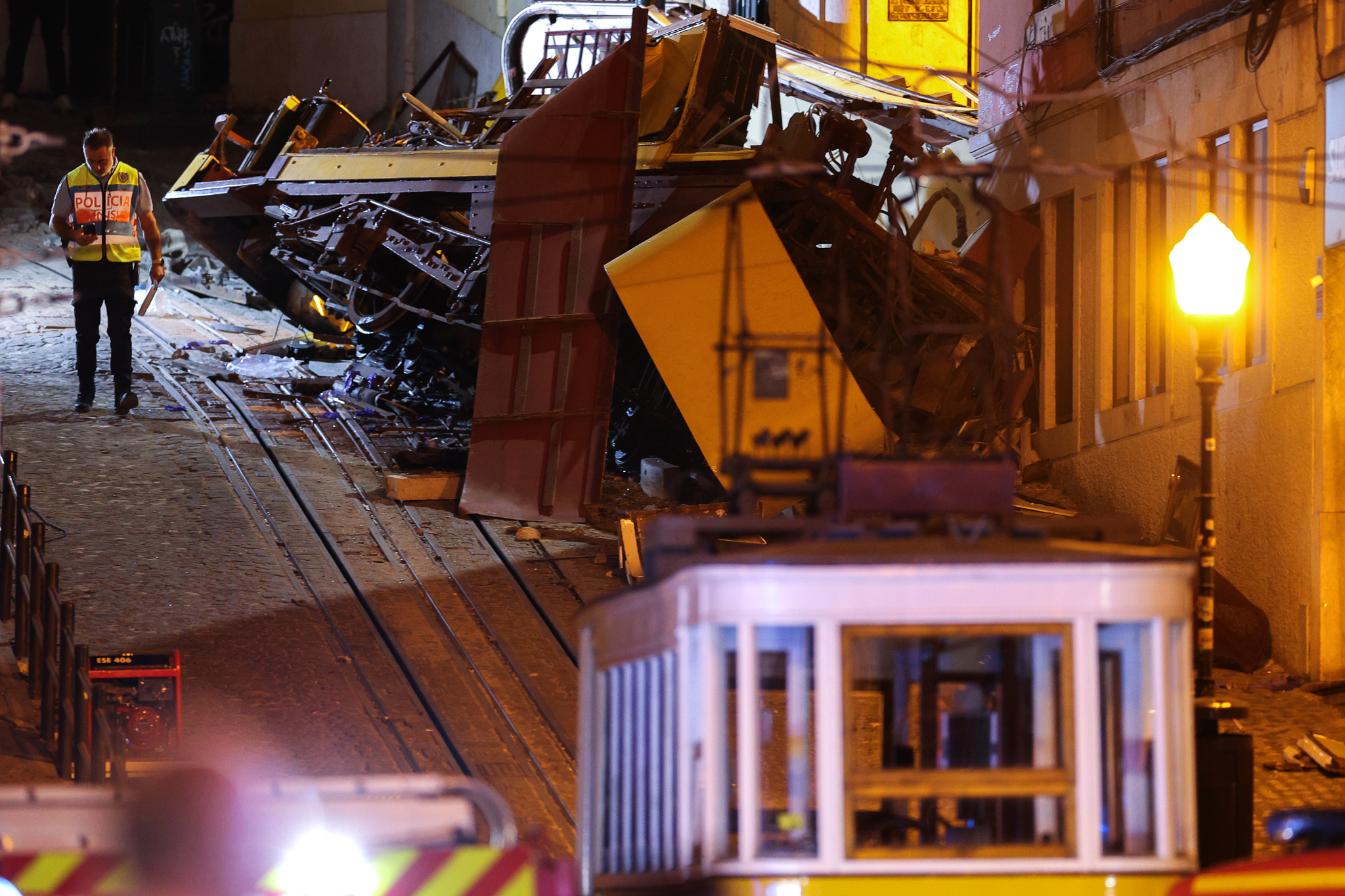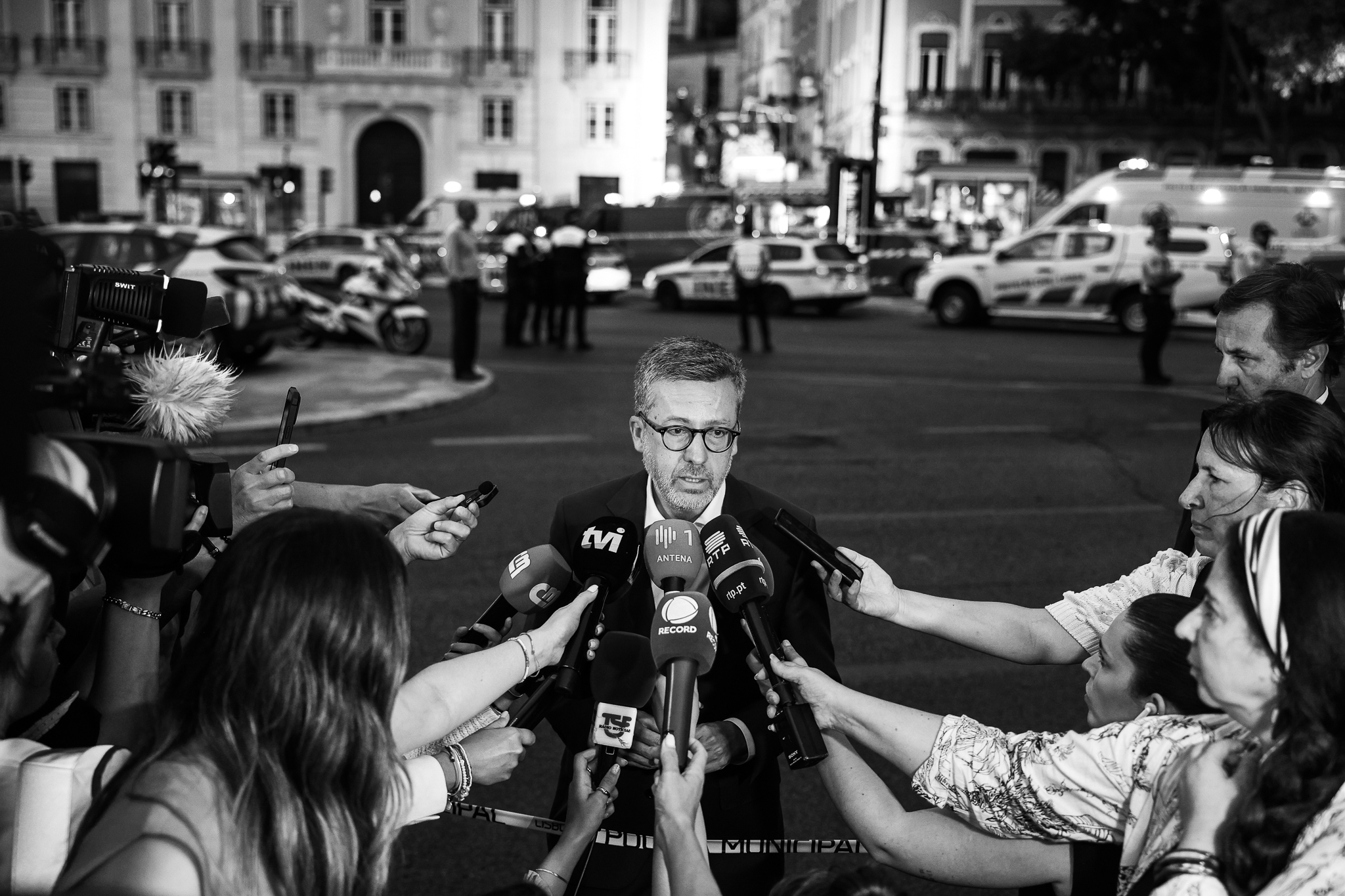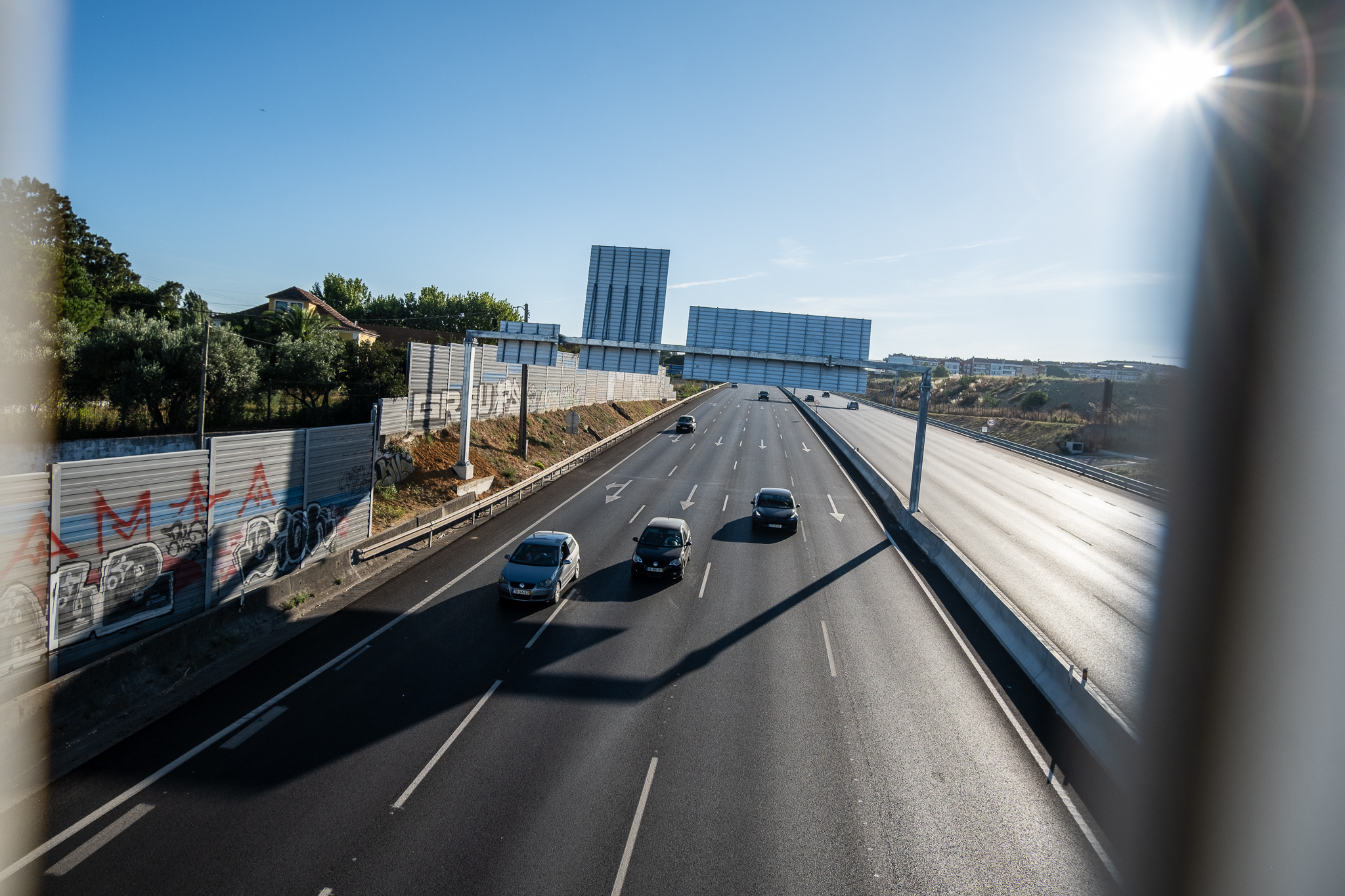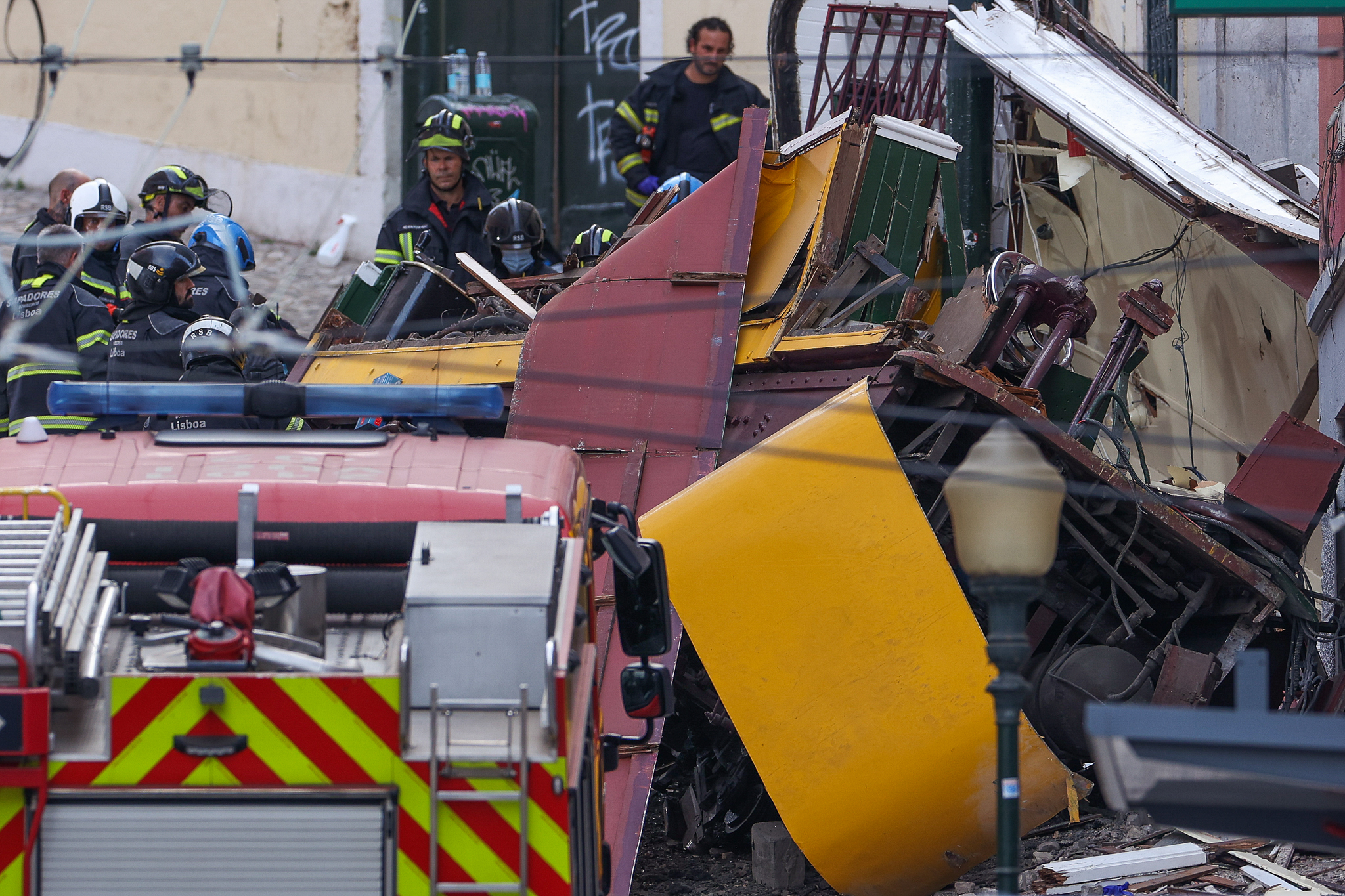Although it is a religious event, World Youth Day promises to give a boost to an area that has long been awaiting a thorough urban renewal. But a year before the World Youth Day, there is still little work being done.

In one year's time, Lisbon will host one of the largest Catholic events in the world - the World Youth Day (WYD)a meeting between thousands of young people from different parts of the globe and Pope Francis that could bring more than a million people to the Portuguese capital. But for those who are not religious, World Youth Day may have the same importance, since it will serve as a pretext for the city of Lisbon to start regenerating an entire urban area near the mouth of the Trancão River with the Tagus, and to finally connect with the neighboring municipality of Loures.
In other words, after the Journey, the two municipalities will have a large riverside park, intermunicipal, that can be visited on foot or by bicycleIt will be a starting point for a new dynamic that is expected to emerge in the area between Parque das Nações and Sacavém. The plans are ambitious and eight years in the making.

Start changing an area
On the Lisbon side, to prepare the Journey's space and the future of the Trancão's surroundings, the City Hall delimited in 2020 a rehabilitation area (ARU - Urban Rehabilitation Area) and defined the interventions to be carried out in an articulated manner (ORU - Urban Rehabilitation Operation). In the documents about this ARU and its ORU, which you can see below, it is stated that the World Youth Day can "leverage or catalyze the regeneration of an entire area that still presents a set of environmental problems, originated by the various sources of pollution of some pre-existing on the site, but with repercussions still at the present time, as is the case of soil contamination".
The area in question and the set of planned interventions relate mainly to the so-called Beirolas Landfilla landfill that Lisbon inherited from the times when, before Expo'98, the riverfront was a gray and polluted industrial area. It is in this landfill, duly decontaminated over the years, that the WYD will now take place and where people will be able to circulate on foot or by bicycle. The requalification of this landfill, under the pretext of the WYD, will allow us to finally complete the Tagus and Trancão Urban Park.
The Beirolas Landfill servedThe site was constructed between 1985 and 1990 to deposit solid waste from Lisbon's industrial area, which was located where Parque das Nações is today and included oil companies. Waste was deposited there for a longer period than initially planned, resulting in overexploitation and consequent malfunction of the leachate and biogas drainage systems. The decontamination of the area contaminated by the oil companies was done over the years, with the extraction of the accumulated leachates and biogas, the isolation of the deposited waste with the application of waterproofing membrane, and the smoothing of the embankment slopes in order to guarantee its stability.

Because it was a contaminated area, the then Tagus Park was never completed, as indicated Urbanization Plan for Expo'98in particular the Detail Plans 5 e 6for this zone. The ARU and ORU Tejo-Trancão address this gap, and the JMJ are a small push to get some of the projects off the ground. One of the main objectives is "the completion of the entire Parque Urbano do Tejo e do Trancão and the restructuring and consolidation of areas that are currently occupied temporarily or still empty. It is intended to be a project that meets the long-term objectives that are in the Expo'98 Urbanization Plan and that is "in concert with the short-term staging of the World Youth Day event".

What is planned?
The great objective is "ensure axes of ecological continuity along the intervention area, with the territories north of the Trancão and the Parque das Nações, through the Urban Park, tree axes, bicycle paths and mobility corridors". Wanted: "the creation of a new green recreational and leisure area on the Embankment will allow the continuity of the 'Passeio do Parque' (a longitudinal pathway) that may continue the crossing of the Trancão through a bridge that will give access to the 'Passeio Ribeirinho' that the municipality of Loures is implementing, allowing to continuously cross the entire Riverfront from Vila Franca to Lisbon"..

Specifically, the Tagus-Trancon ARU and ORU provide for:
- a completion of the Parque Urbano do Tejo e do Trancão as foreseen in 1998, with the creation of "a new place for recreation and leisure on the Embankment, of inter-municipal scope, articulated with the various interventions planned to the North (Loures) and continuous with the Tagus Park already implemented to the South. It is intended to "environmental rehabilitation of the intervention area, coordinating the design and construction of the Park with a deep intervention in the infrastructure of the Beirolas Landfill";
- the insertion of a surface light rail - the LIOS Oriental -, "a Collective Transportation on-Site (TCSP) corridor from Santa Apolónia to Sacavém, already in the municipality of Loures". The Western LIOS "will ensure fast and direct connections along the eastern waterfront corridor, connecting also to the Metro's Red and Blue lines and to the national railway line at Gare do Oriente and Santa Apolónia";

- a transformation of the Sacavém Railway Station into a "intermodal node of local and suburban scope", "allowing it to serve the entire northern area of Parque das Nações". The idea is that this station will gain a new environment in terms of public space and road network that promotes "a more efficient, safe and comfortable pedestrian accessibility"; it is also an objective to articulate the station with the cycling network and with LIOS;
- the creation of a new cyclopedestrian bridge over the Trancãoso that "promote local connections to the North [of the city], in articulation with the municipality of Loures";
- reinforcement of the local cycling network with "new sections of a functional character and properly articulated with the school equipments, the Sacavém Railway Station and the entrances to the future Urban Park of the Rivers Tejo and Trancão". "Working in continuity with the existing network to the south from Alameda dos Oceanos, the new bikeway should inflect south from the Vasco da Gama Bridge to the Passeio Heróis do Mar, to allow the release of Via do Oriente for the TCSP." [There is currently a pop-up bike lane, created in 2020, on Orient Way].
- an requalification of "green spaces and expectant spaces at the Beirolas WWTP site and its surroundings, promoting an environmental and landscape requalification of this equipment"..
- a "completion of the interventions planned for the expectant lots within the intervention area"A new elementary school.
The area of intervention near the Trancão and the respective projects are planned for eight years. The total public investment planned is 25.5 million euros, a figure that includes the rehabilitation of the Beirolas landfill, the completion of the Trancão River Tagus Urban Park, two bridges over the Trancão (one cyclopedestrian bridge and one road bridge), the modernization of the Sacavém Train Station (the responsibility of IP) and the section of the LIOS in the area of intervention.
What will we get, for now?
World Youth Day (WYD) will give us at least three things:
- a completion of the current Parque Urbano do Tejo e do Trancão with the requalification of the Beirolas landfill and its surroundings - a project under the responsibility of the SRU;
- an Trancão Cyclopedonal Bridgeconnecting Lisbon and Loures - a project under EMEL's responsibility;
- an Loures River Path which, through a set of wooden walkways, will connect to Vila Franca se Xira, allowing the enjoyment on foot or by bicycle of the entire Tagus River front along 6 km - a project in charge of the Loures City Hall.
It is clear that an event of this magnitude will require another type of infrastructure, of a more functional nature, such as a stage, toilets or plumbing, but the three facilities listed should be the main "gifts" of WYD for Lisbon.
Where does each work stand? Let's start with the bridge.

Trancão Cyclopedonal Bridge
Its construction began in September 2021 and its conclusion is delayed - it was scheduled for this July, but it is now estimated that the bridge will be ready in the last quarter. It is a wooden infrastructure that will allow the connection between the cycling networks of the municipalities of Lisbon and Loures.

The bridge will allow the marginal route along the Tagus, which currently runs between Algés and Parque das Nações, to be extended to Loures, in the future, in a wider itinerary, to establish the connection between Cascais and Vila Franca de Xira, with a total extension of about 60 km.
The Trancão cyclopedestrian bridge project is co-financed by the Lisbon 2020 and results in a total investment of nearly 3 million euros, with the maximum contribution of the European Regional Development Fund (ERDF) of 447.1 thousand euros.

Loures River Path
This bridge will be an essential element in the access to the future Loures River Pathwhose construction began in July 2nd. This is a six kilometer long pedestrian and cycling walkway that aims to bring the population closer to the Tagus River and at the same time connect Lisbon, Loures, and Vila Franca de Xira.
The wooden pathway will include several bird watching posts, fourteen shade tunnels, an LED lighting system powered autonomously by photovoltaic cells, and informative signage. The construction of the Loures River Path is expected to take ten months.

According to the municipality, after the World Youth Day, a green park will be built, connected to the passageways, as well as an overpass over the railway line and the IC2. The Loures Riverside Path will connect the municipality of Vila Franca de Xira, which already has several riverside walkways within what is called the Tagus Estuary Riverside Linear Park. The project is the result of a total investment of 4.7 million euros, 2.5 million of which are supported by FEDER.
In 2017, taking advantage of the electoral momentum, the municipality of Loures had already completed a small part of the project, with the opening of a section between the Santa Iria de Azóia station and the BP pontoon, in a length of only 740 meters.
Completion of the Tagus and Trancão Urban Park
In 2019, TVI went to visit the space where the World Youth Day would land; there was talk then of a "mini-Expo" and three years of construction. Now, apart from the bridge that should be ready this year, the Loures River Path will only be ready shortly before the start of the event. The completion of the Parque Urbano do Tejo e do Trancão has only just started. The work is under the responsibility of SRU, the Lisbon municipal works company, and was awarded at the end of April to the company Oliveiras S.A.. The contract involves the Beirolas landfill area, right next to the bridge, and has a deadline of 10 months - in other words, if all goes well, the work should be finished in February/March of next year.

On a visit to the site, we can see that there are several machines on the ground shaping the terrain to shape the future extension of the Park, which, between August 1 and 6 of next year, will be one of the main venues for World Youth Day. The contract between SRU and Oliveiras, S.A. is for "design and build", which means that it will be up to this company to make the execution project for the rehabilitation of the Landfill and execute it - The total cost of the work is around 7 million Euros.
SRU contracted, in May50.2 thousand euros, a geotechnical consultant to do a monitoring of the Landfill, in Junefor 19.8 thousand euros and direct adjustment, called the LNEC to monitor the work from the engineering point of view. In total, there is an investment of almost 70 thousand euros in supervision.
The Journey's accounts
In a public town hall meeting last week, Councilwoman Filipa Roseta informed us that when the municipal executive took office "the only thing that was [budgeted] at SRU" about World Youth Day were "nine million for the Trancão, for decontamination and land arrangement". "We are moving forward with the Tancão construction project"but "the only thing that was in the original [budget] was the modeling" of the landsaid the PSD Councilwoman.
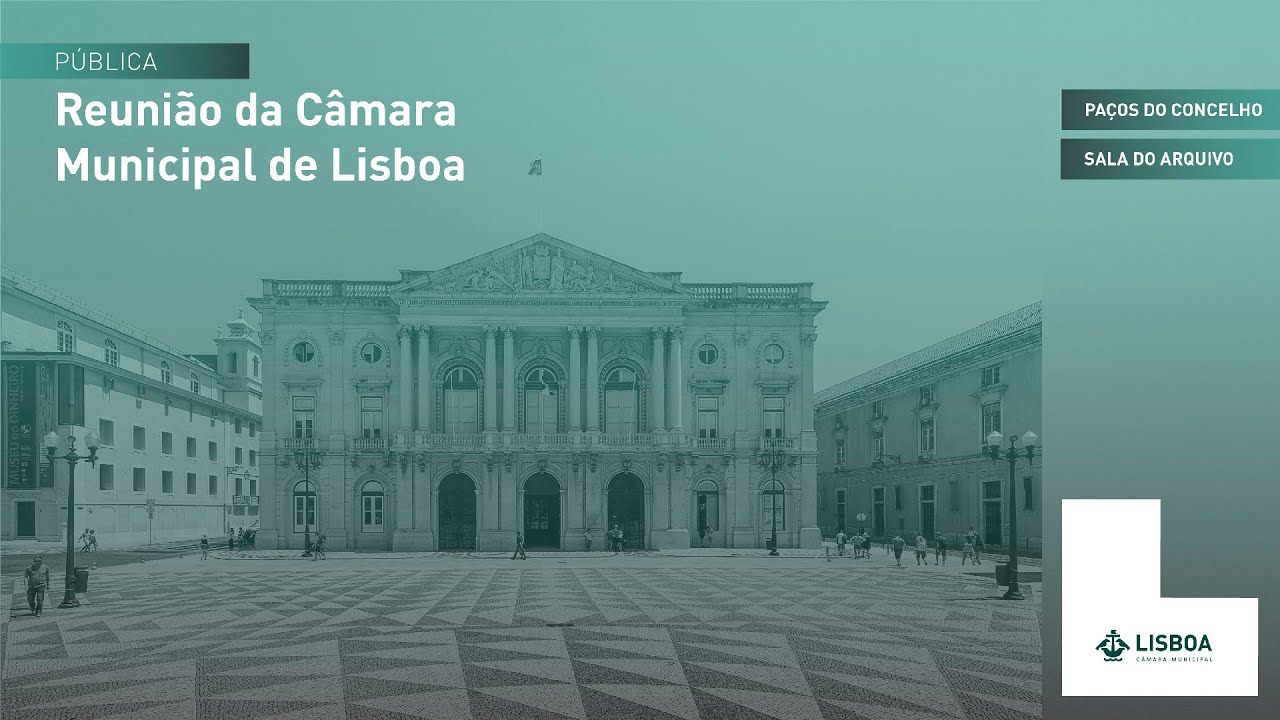
In fact, the SRU's Plan of Activities and Budget (PAO) for this year, which was drawn up at the end of 2021 between transitions of city executives, included a total of 9.1 million earmarked for Youth Dayof which 331.5 thousand will have been spent in 2021, about 3 million will be invested in 2022, and 5.8 million in 2023. These values would only serve to "rehabilitation of the infrastructure of the Beirolas Landfill for the recovery of safety conditions in the operation of the system" and for "modeling and infrastructure of the intervention area with a view to creating the conditions for holding the WYD 2023".
There can always be a mismatch between what is budgeted (what is planned to be done) and the reality (what is done), but doing the math on the portal Base.govwe were able to find the 330 thousand Euros invested in 2021. In Marchthe SRU went for a company to do a topographical survey of the land (14.4 thousand euros). In Aprilcontracted, by direct adjustment, another company for "environmental and geotechnical situation characterization" and for "technical solution study" for a future intervention at the Landfill (294 thousand Euros). In Augustacquired from LNEC "engineering services for stability and foundation opinion for intervention in the Beirolas landfill" (19.8 thousand euros).
The work to be carried out by Oliveiras, S.A. - worth 7 million euros - is the modelling of the land referred to by Councilwoman Filipa Roseta. It will be joined by another 2 million for the stage from which Pope Francis will celebrate Mass for the faithful at the closing of the meetingaccording to reports the Expresso; it should be a structure of about two thousand square meters and 12 meters high. SRU has already "you did the stage design and now you have to launch that work"Filipa Roseta announced at the meeting; "and you have to lay the whole infrastructure of the land, like water, sewage... None of that was budgeted for".

The confusions
The PAO review, approved this week that passed the Municipal Assemblyalmost doubled the budget set aside for WYD. The SRU is now authorized to spend 7 million during 2022 - the work already underway - and there are almost 10 million planned in 2023, for a total of 17.3 million. But, according to a CML communiqué sent on Friday to the newsrooms, the municipality assumes a "total investment of up to 35 million euros in the demanding creation of conditions for the different events" of WYD. "Already this week, a reinforcement of expenses for JMJ was approved by the Lisbon City Council, which are now endowed with 21 million euros, practically double what we found at the beginning of the mandate." That is, the municipality will have an additional four million, in addition to the SRU, to invest.
The Lisbon City Hall's statement came after the Expresso newspaper had advanced, also on Fridaythat the municipality led by Carlos Moedas had not yet signed the memorandum of understanding that it sent in April and that "distributes the work, the bill, and the locations of the various initiatives. Including the event to welcome the Pope". The Expresso raised doubts about the CML's real commitment to the event, which Moedas inherited from Medina (Lisbon was chosen for WYD in 2019). The Expresso said that without Lisbon's signature, "part of WYD events may even leave the capital" and that "alternatives are already being considered, from Vila Franca de Xira to Cascais"..

In Wednesday's public meeting, Carlos Moedas had, however, reaffirmed the interest of the City of Lisbon in the event, but left a clear message: "The preparation can't just be the City's alone, and that's what I've tried to explain to the government. I think we will come to an agreement quickly." He also mentioned "the deadlines are short; therefore, we will have from September 1 to accelerate everything to the maximum". It should be noted that WYD is the result of collaboration between several entities: in addition to the municipalities of Lisbon and Loures, there is the Local Organizing Committee (COL), created by the Patriarchate of Lisbon, and a WYD working group in the Government, coordinated by the former councilman of the Green Structure of Lisbon, José Sá Fernandes.
In the note sent to the press, the CML referred that,"as in previous events - sports and others - of global scale and organized in Portugal, the Government's support was clear. We also believe that in the WYD the commitments made by the State, directly and indirectly, are at least equal to the effort made by the Lisbon municipality. A concrete clarification and assumption of responsibilities by all involved is essential to ensure the success of a demanding operation that will bring young people from all over the world to Portugal.. José Sá Fernandes told Expresso that "everything will happen"although there is "some apprehension" because "CML lacks to say that it does everything it committed to". Or take over the tasks, "Or, if you don't assume, you have to say so, so we can come up with a solution. There are always solutions for everything", said the Government leader for the event.
WYD will take place in various locations around the city. The area around Trancão will be the main location, where the pilgrims will stay overnight, and where the Vigil will be held on Thursday, August 5, and the Final Mass on Sunday, to close the event. According to Expresso, which had access to a draft of the memorandum, the Edward VII Park may come to host the opening Mass with the Cardinal Patriarch, the welcome to Pope Francis on August 4, and the Stations of the Cross. A Bethlehem area will host the Vocations Fair, a kind of book fair, and the Forgiveness Park, a space composed of small confessionals. The Youth Festival will take shows and cultural events to various parts of the city, such as the Terreiro do Paço, a Alameda D. Afonso Henriques or the Bela Vista Park.
In Madrid, the 2011 World Youth Day brought together 1.2 million people. In Krakow, the event held in the Polish city in 2016 welcomed two million pilgrims. In Lisbon and Loures, more than a million participants are expected.



